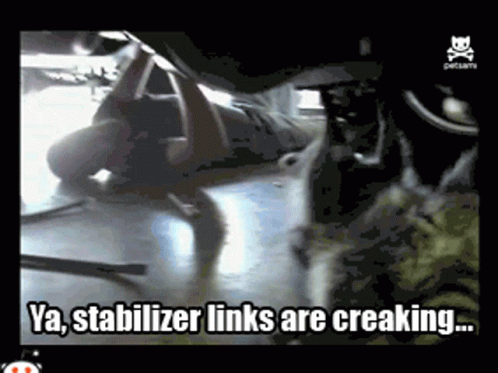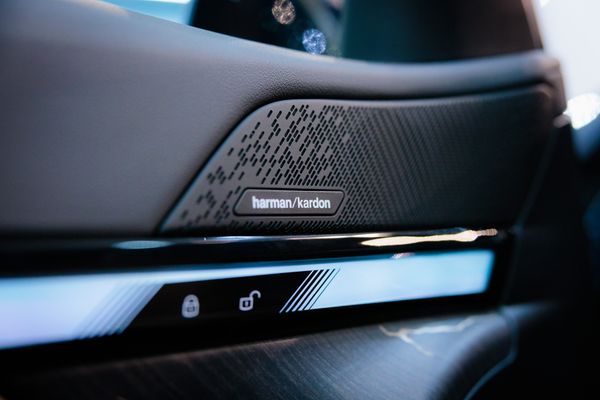BMW F3x F1x Gxx: Navigating that Pesky Ticking Noise When Steering

Ah, the joys of owning a BMW.
The luxurious feel, the purr of the engine, and... wait, what's that ticking noise?
If you've ever been cruising in the parking lot in your beloved Bimmer, only to be interrupted by a mysterious clicking or ticking while steering at those leisurely low speeds, you're not alone.
This isn't the soundtrack any BMW enthusiast signed up for.
Let's dive deep into this peculiar symphony, figure out its origin, and more importantly, how to give it the boot.
Buckle up; we're going on a noise-canceling journey.
The Main Culprit
Now, before we get ahead of ourselves blaming every nut, bolt, and hinge, let's zone in on the usual suspect: the microscopic movements in the front axle wheel assembly.

Imagine two ballroom dancers moving ever so slightly out of sync. It's subtle, but to the trained eye (or ear, in our case), it's unmistakable.
The primary scene of this acoustic crime?
The space between the inner brake disc chamber and the wheel bearing flange. It's like a secret conversation happening right under your nose, or in this case, your steering wheel.
But here's a curveball: this isn’t a universal BMW quirk.
It's a unique performance by those BMWs sporting two-part lightweight brake discs. If yours is one of them, well, congratulations on being part of the special club.

Let's find out how to make your ride tick-free!
The Detective Work – Isolating the Noise
Alright, Sherlock, time to put on that detective hat. We've got a mystery noise on our hands, and it's begging to be isolated.

The Brake Test
Think of this as your first clue. Steer that beauty from lock to lock, all while holding the brake. It's like asking the noise, "You still there?" If it sneaks away, you're onto something.
Why?
Because pressing that brake pedal might just be holding back the culprits: the brake disc and hub. They're like two mischievous kids who stop causing trouble when you're looking.
The Wheel Bolt Twist
But what if our noisy intruder is bolder? If it still sings its ticking tune, let's turn our focus to the front wheel bolts.
Here's a trick from the playbook: loosen 'em up and then torque them to about half of what the rulebook says (~ 50 lb-ft). Listen closely.
Change in the serenade?
If yes, go bold and try over-torquing. You might just find that cranking up the torque silences the symphony.
Remember, while it's not exact rocket science, it's pretty darn close. And in the world of BMWs, sometimes you've got to trust your ears as much as your tools.
The Fix – Bidding Adieu to the Clicking
Okay, now that we've played detective, let's play surgeon. We've pinpointed the noise, and now it's time to operate. Scalpel? Nah. Wrench? Absolutely.

Dismantling Day
Start by giving your front brake discs a break—literally. Remove them and set them aside. Think of it as taking the stage apart to find out which floorboard's creaking.
The Cleaning Ritual
It's not just about cleanliness; it's about setting the stage for a noise-free performance. Give the flange and inner disc chamber surface a thorough clean with a brake cleaner.
And whatever you do, resist the urge to grease.
We're not frying chicken here!
Grip Discs to the Rescue
These are the unsung heroes. For a snug fit and to keep things from chattering, slide in a grip disc between the brake disc chamber and the wheel bearing flange.
It's like giving your brake disc some grippy shoes to prevent it from sliding around.
Assembly and Torque Time
Put everything back together, making sure it's as tight as a drum (but without the drumming noise).
Follow the torque specs like they're a sacred text.
Because, in the world of cars, they kind of are.
Oh, and a quick assist for those diving into the parts bin:
- Grip disc for G-series (bolt pattern 5×112): 34 10 6 884 839
- Grip disc for F-series (bolt pattern 5×120): 34 10 6 884 837
Remember, these aren't just random numbers; they're the keys to a silent and smooth ride. You might not find these grip discs on every store shelf, but your friendly BMW dealer part department should have your back.
The Plot Thickens – Other Potential Noise Makers
Just when you thought you had this noise gig figured out, the BMW throws you a curveball. Like any thrilling mystery, there's always a twist.
Let's explore the other potential perpetrators of our ticking tale.
Wheel Bearing Hub Movement

It's a subtle shift, almost imperceptible. Like a whisper in a noisy room. If you find the wheel-bearing hub (let's call it suspect #10) moving inside its partner-in-crime, the wheel-bearing carrier (known in our story as accomplice #2), it's time to intervene.
Strip it down, clean all those hidden nooks and crannies, and put it all back together with a fresh set of bolts.
And as always, torque is king—follow those specs!
Carrier Interrogation
Sometimes, the entire wheel bearing carrier (again, our friend #2) looks suspicious.
When in doubt?
Off it comes!
Inspect every inch, every surface.
Then, give it a spa day: a good scrub with Scotch-Brite pads to ensure it's squeaky clean (minus the squeak).
Reassemble with brand-new hardware, and as with any good ritual, torque everything just right.
A Word to the Wise
BMWs have been known to change things up. Specifically, they've revised the bolt thread pitch on some early F-series models.
It's like changing the secret handshake. So, when ordering new bolts, make sure you've got the latest info. No one likes an awkward handshake.
There you have it.
A deeper dive into the intricacies of what might be causing that pesky noise.
Remember, it's all about the details. Every bolt, every surface, every torque spec. It's a puzzle, and each piece plays a part.
Uncommon Culprits
Just when you thought you'd heard it all, the BMW's front end throws another enigmatic echo into the mix.
These aren't your run-of-the-mill noise makers; they're the outliers, the unexpected guests at the party.
Stabilizer Swing Bars
Picture these as the orchestra's string section. When they're in harmony, it's music to your ears.
But a single off-note?
That's our third most common noise source.

To test, grab these bars with a firm hand. Feel for any wobbly movement in their ball joints. If they're playing coy and you can't sense movement, recruit a buddy.
Let them turn the steering wheel while you keep your hand on the pulse of the swing bar. If the noise is coming from this section, you'll feel the tension release like the climax of a dramatic symphony.
The Mechanics' Shortcut Symphony
Especially with older, pre-loved BMWs, there's a chance that a previous mechanic might've taken some... let's say, 'creative liberties' with their work.
Using an impact wrench to torque nuts and bolts might seem like a time-saver, but it's like rushing through a musical score without hitting the right notes.

Take the steering tie rod end, for instance. It's designed with precise, sharp protrusions to grip and hold. An impact wrench can smooth these out, diminishing their purpose and potentially leading to our notorious noise.
The Bigger Picture
It's not just about one or two components. Microscopic movements in the front axle can occur wherever two metals meet under tension.
Think of them as tiny duets happening all over the place. And while these duets might be harmonious in most places, it only takes one off-key note to disrupt the whole concert.
So, the next time you hear that unexpected tick or click, remember: it's not just about the obvious culprits. Sometimes, you have to look (and listen) a little deeper.
The Key Takeaway
By now, you've probably realized that the world beneath your BMW's hood (or more accurately, beneath its wheels) is as intricate as a symphony orchestra.
Every component, every piece, plays its part in creating the harmonious hum of your driving experience.
The crux of our musical mystery?
Those pesky microscopic movements in the front axle.
It's astounding how something so minute, almost invisible to the naked eye, can produce a noise that's impossible to ignore. It's a gentle reminder that in the realm of precision engineering, even the tiniest of details matter.
Whether it's two metals meeting under tension, a wheel bolt slightly out of torque, or a stabilizer bar subtly out of sync, it's these details that define the drive.
And while it might be tempting to ignore that faint ticking or clicking, addressing it head-on ensures that your BMW continues to produce the kind of music that both driver and machine deserve.
So, the next time you take a drive, listen closely.
Every sound, every hum, every tick, tells a story.
And now, armed with this knowledge, you're more than equipped to ensure that story remains a harmonious one.





